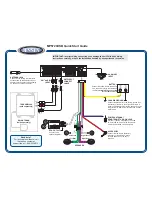
Dynamic Frequency Selection
Understanding Dynamic Frequency Selection
2
Radio Channels and Transmit Frequencies
OL-11491-03
DFS Actions
DFS-enabled radios monitor the operating frequency for radar signals. If radar signals are detected on
the channel, the wireless device takes these steps:
•
Blocks new transmissions on the channel.
•
Flushes the power-save client queues.
1
•
Broadcasts an 802.11h channel-switch announcement.
•
Disassociates remaining client devices.
•
Randomly selects a different channel:
–
If the wireless device does not select a DFS-required channel, it enables beacons and accepts
client associations.
–
If the wireless device selects a DFS-required channel, it scans the new channel for radar signals
for 60 seconds. If there are no radar signals on the new channel, the wireless device enables
beacons and accepts client associations. If a radar signal is detected, the wireless device selects
a different channel.
If a preferred channel is configurable and available, it is selected first.
Dynamic Frequency Selection Channels
When a DFS–enabled radio is operating on one of the following channels, the wireless device uses DFS
to monitor the operating frequency and switch to another frequency or reduce power as necessary:
•
52 (5260 MHz)
•
56 (5280 MHz)
•
60 (5300 MHz)
•
64 (5320 MHz)
•
100 (5500 MHz)
•
104 (5520 MHz)
•
108 (5540 MHz)
•
112 (5560 MHz)
•
116 (5580 MHz)
•
120 (5600 MHz)
•
124 (5620 MHz)
•
128 (5640 MHz)
•
132 (5660 MHz)
•
136 (5680 MHz)
•
140 (5700 MHz)
1. 52, (5260 MHz), 64 (5320 MHz), 120 (5600 MHz), and 128 ( 5640) are not supported on the Cisco 3200 Series
WMIC.
















































